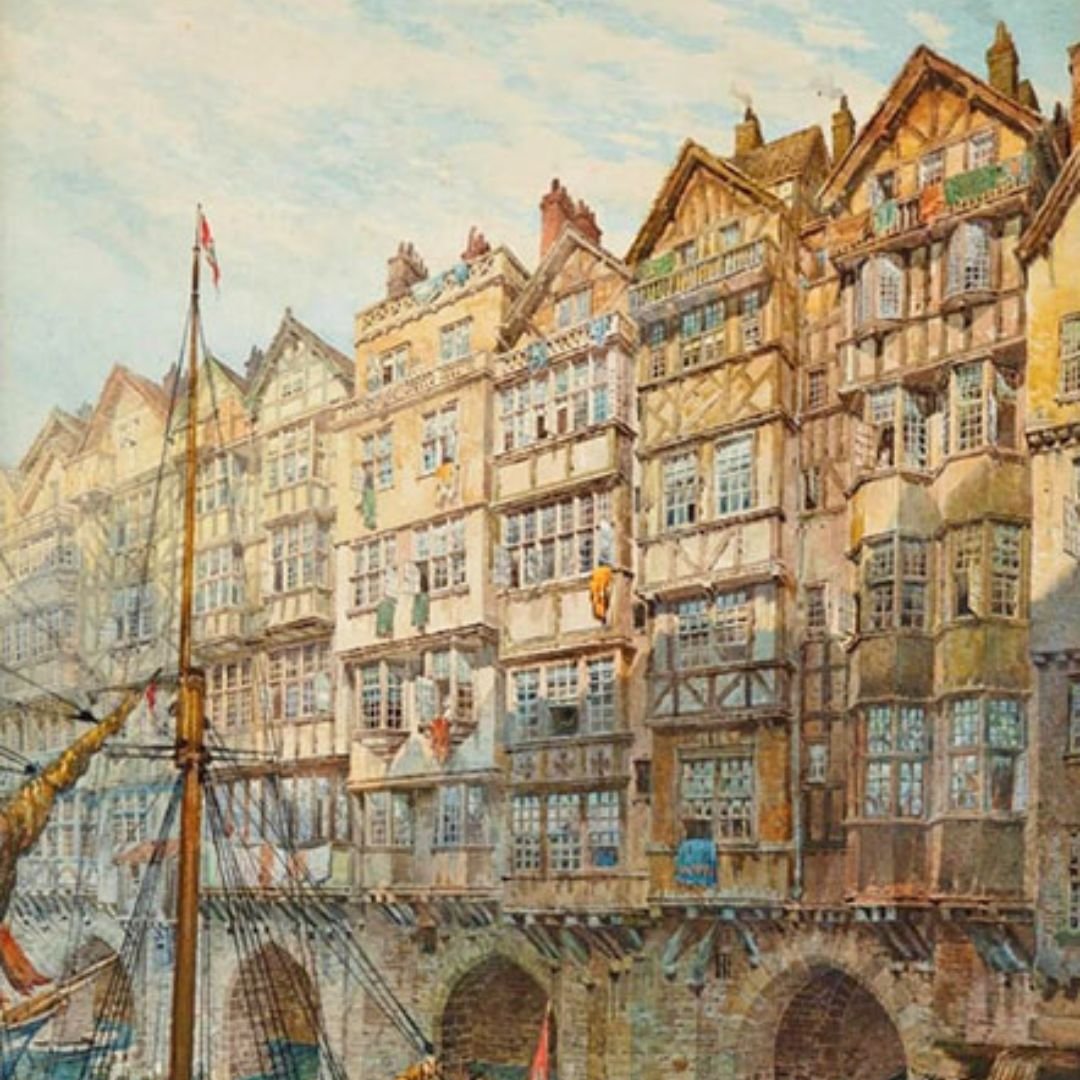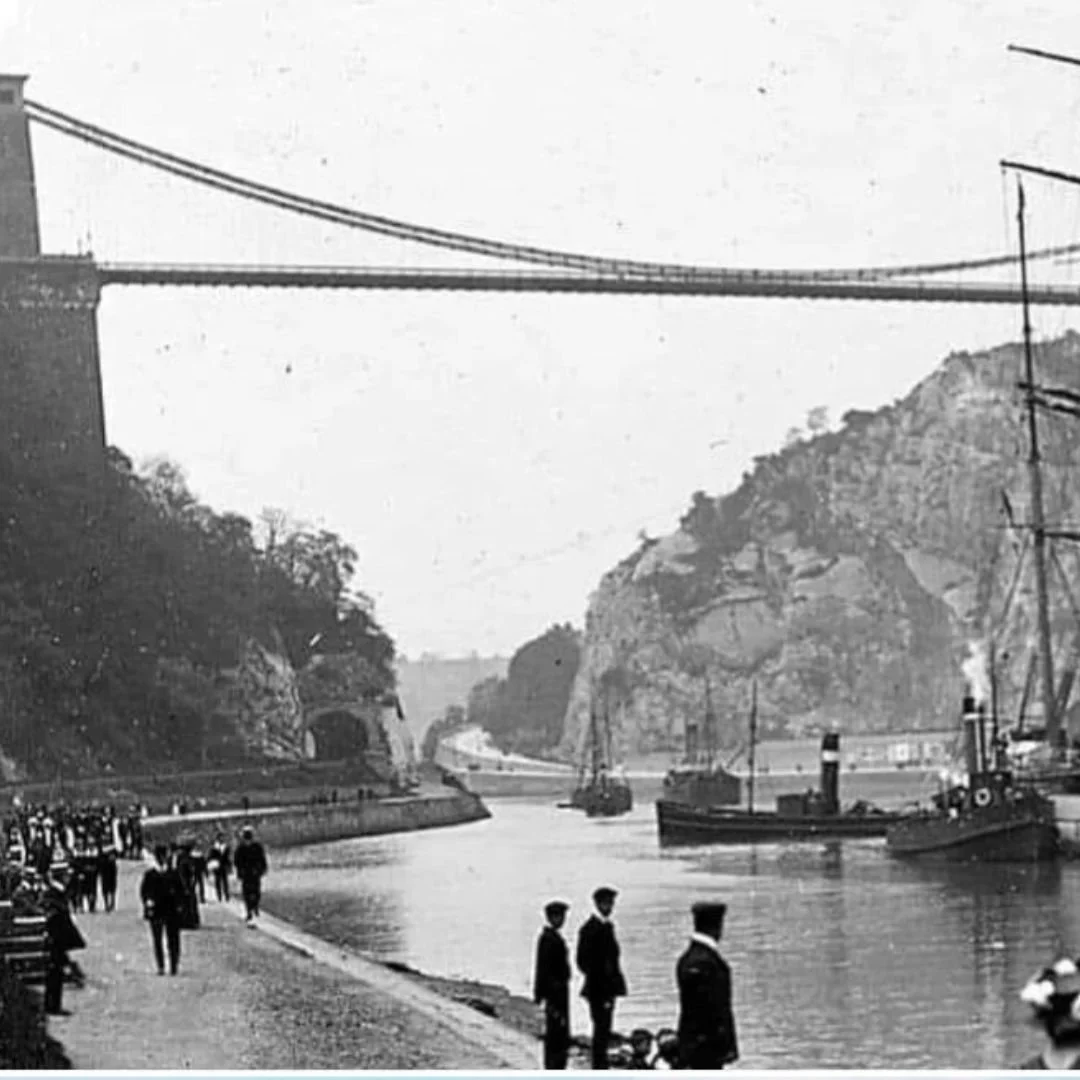Old Bristol Bridge, Engineering Marvel Built In 1245
The original Bristol Bridge, built in 1245, was a significant medieval structure that played a crucial role in the development of the city of Bristol.
There were 26 five floor houses directly on the bridge, containing 26 shops and families of around 200-400 people.
It was constructed to replace an earlier wooden bridge and facilitated trade and transportation across the River Avon.
The bridge underwent several reconstructions and renovations over the centuries to accommodate increasing traffic and to maintain its structural integrity.
Contemporaries described the bridge as being 216 ft across with four stone arches, rising in height at the centre.
Surveys suggested the structure had been originally very well made and it proved relatively robust over the years.
The dock works were massive and expensive, one of the most ambitious engineering works undertaken in the whole of Europe at the time.
Since all the work was done by the muscle of horses and men, the people of Redcliffe and Temple areas had to be conscripted into helping with the trench.
A 17th-century illustration shows that these bridge houses were five stories high, including the attic rooms, and that they overhung the river much as Tudor houses would overhang the street.
Like London Bridge, Bristol Bridge was rapidly lined with shops - it became one of the busiest commercial centres of the city.
Traders lived above the shop and the houses on the bridge rose higher and higher over the centuries.
They were timber-built and jettied out over the river and road to enlarge their floor space.
The bridge was regarded as a place where the wealthy would live, hosting a community of goldsmiths.
Houses on the bridge were attractive and charged high rents as they had so much passing traffic, and had plenty of fresh air while waste could be dropped into the river.
There was also a chapel, dedicated to the Assumption of the Virgin Mary.
The chapel was 75 ft, and 21 ft wide, overhanging the sides of the bridge. It had gates at either end of a covered passageway, effectively creating a large gatehouse, controlling access into the city.
The ground floor formed a crypt, used as a meeting room for Bristol’s council, with the chapel on the first floor, and a bell-tower above that.
Its population was also perceived to be strongly parliamentarian.
However, it wouldn’t have been a pleasant place to live…
On market days, animals being brought into town could panic or run amok - one story has a bull charging through a house, battering down the thin walls and falling into the river below.
The river was an open sewer, which smelled horrible at low tide on hot days.
This was made worse by the fact that right next to the bridge on the north-east side was an area know as the Shambles, where butchers slaughtered animals.
If the river flooded, the lower storeys of buildings would be inundated.
This was less common than ships going adrift at high tides and building being damaged by masts.
Famous residents on the historic bridge include Dr. Tobias Matthew (pictured above), who was born over his father’s shop there. He would go on to become Archbishop of York.
He donated some of the first books to Bristol’s first lending library and probably encouraged others to do likewise.
Unfortunately, during the Civil War in 1647, the bridge was struck by fire, with 24 houses being burnt.
By the 18th century, it became evident that the old bridge was inadequate for the growing demands of the city.
In the 1760s, plans were made to replace the medieval bridge with a new one designed by the renowned architect James Bridges.
The construction of the new Bristol Bridge began in 1763 and was completed in 1768.
This new bridge featured a wider span and improved infrastructure, better suited to the needs of the time.
Resentment at the tolls exacted to cross the new bridge occasioned the Bristol Bridge Riot of 1793.
The riot of 30 September 1793 began as a protest at renewal of an act levying tolls on Bristol Bridge, which included the proposal to demolish several houses near the bridge in order to create a new access road, and controversy about the date for removal of gates.
Eleven people were killed and 45 injured, making it one of the worst massacres of the 18th century in England.
The toll houses were turned into shops before they were removed.
In the 19th century, the roadway was again congested, so walkways were added on either side, the supporting columns disguising the classical Georgian design.
It was graced with a new concrete deck and railings in the 1950s which makes it look as though the whole thing was built post-WW2, but most of Thomas Paty’s original structure is still in place underneath to this day.
Today, Bristol’s most popular and famous bridge is The Clifton Suspension Bridge - designed by the great Victorian engineer Isambard Kingdom Brunel.
Designed in the early 19th century for light horse drawn traffic, it still meets the demands of 21st century commuter with 11-12,000 vehicles crossing it every day.
The Clifton Suspension Bridge’s spectacular setting on the cliffs of the Avon Gorge has made it the defining symbol of Bristol, drawing thousands of visitors a year.
The bridge spans 214 metres between its two 26 metre high towers and stands 76 metres above the high water mark in the Avon river gorge.
Modern computer analysis has revealed that in his design of the crucial joints between the 4,200 links that make up the bridge’s chain.
Brunel had made an almost perfect calculation of the minimal weight required to maintain maximum strength.
It’s a wonderful sight to see for your next trip to Bristol!
If you enjoyed this blog post, please follow Exploring GB on Facebook for daily travel content and inspiration.
Don’t forget to check out our latest blog posts below!
Thank you for visiting Exploring GB.






















